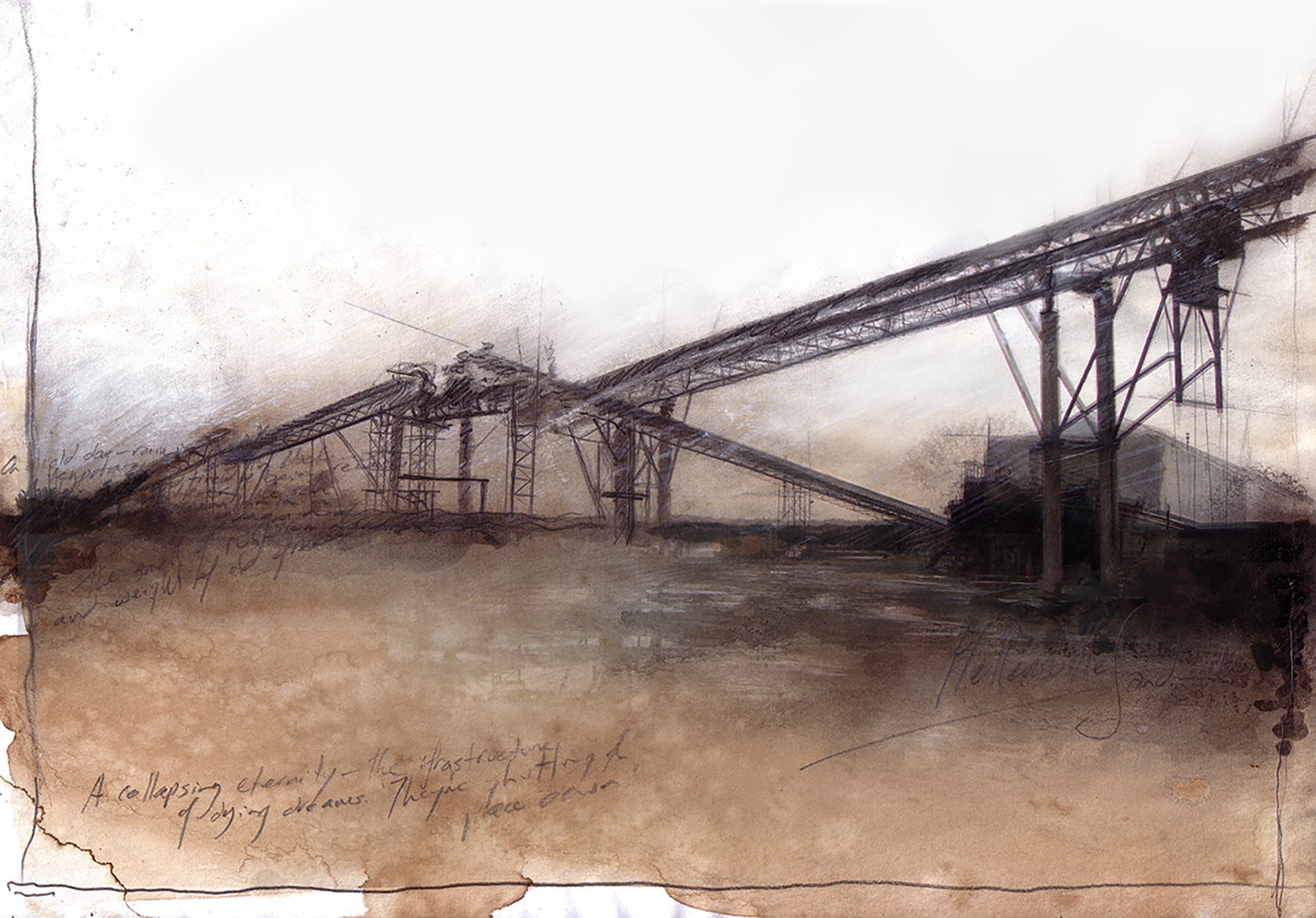By Day By Night – Welby Ings, AUT
By Day By Night is an interview series that profiles design teachers from design schools throughout Aotearoa New Zealand. We learn about their role as a teacher and their own personal design practice.
Today we hear from Professor Welby Ings who works in the Communication Design Department at the School of Art + Design at AUT on the release of his first feature length film, Punch.
Punch confronts a pervasive myth that everything is rosy for LGBTQ+ adolescents in New Zealand and it will be premiering at the Whānau Mārama: New Zealand International Film Festival this month.

(Louise) – Kia ora Welby, congratulations on the release of Punch – your first feature length film.
I experienced the film as a deeply personal love letter that is raw and quietly itself. I loved the last scene and the song that Whetu sings – he was my favourite character, I felt he represented something in all of us and I watched his journey throughout the story with moments of sadness and joy.
Through your visual metaphors, Punch achieved a sense of timelessness and I sensed an underlying unease that pervaded the small town that was the backdrop to the story.
Watching Punch, you experience a series of crafted visual vignettes that build layer upon layer a world and a narrative.
Can you share with us how your design process and being a designer, informed you when directing a feature length film?
(Welby) I see myself as a story designer rather than a writer/director because I think in space, time, imagery … and presence and absence (so beyond the realm of words). This is why many of my films have no dialogue or (as in PUNCH) the dialogue bristles because it is very pared back.
I didn’t write screenplays initially. Like many designers I begin by filling walls with images (although I tend to draw these from my imagination or sketch out locations that I find interesting). So, I think in images because I understand cinema as talking pictures.
I also create fictional maps that help me to craft the sound and the spatial architecture of the worlds I create. Although these are largely private, I sometimes share them discreetly with production and sound designers because they function as a kind of shorthand for understanding relationships.
Thematically I also tend to approach film, keeping the designer’s question ‘What can I take away to make this work?’ in my back pocket. I think this is why my work is visually beautiful but often quite sparse.


(Louise) The use of visual symbols feature heavily in Punch, can you tell us about how you’ve used this as a visual tool?
(Welby) I am a theme guy. I tend to think of visual symbols as threads that hold a complex narrative together. PUNCH is set in a small town called Pirau (which means rotten or foetid). If you watch and listen closely to the film, you will notice things like regimented rows of rubbish bins lining perfect streets, or debris on the back porch, or the sound of a refuse truck picking up rubbish in the early morning. These things all serve to subliminally make the ordinary extraordinary but also run a thread of unease through the portrait of the town.
Similarly because I initially draw my films, PUNCH opens and closes with a piece of water-stained parchment that pencil lines track across, or bruises bleed into. So the story finds and leaves its narrative on blank paper. I worked with Robin Charles on the titles and credit sequences and the look is unusual and delicate. I know … it’s a little self-indulgent but it is a homage to the fact that as a designer I always begin with a piece of paper.
There’s also the theme of obsessive collecting that runs through the film. For instance the interior of Whetu’s whare and Jim’s bedroom, are conceptual replicas of each other. They are festooned with dislocated elements that talk us about the struggle the boys have to find meaning from fragments. The wall of newspaper clippings and certificates that Stan has created in his son’s boxing gym is the same.
(Louise) When we last chatted to you back in 2016 on the DA Conversations podcast, you talked about your films not being for the New Zealand audience but more for an international audience, is this the case with Punch?
(Welby) I love New Zealand. I find it hugely inspirational but I am not attracted to the TVC or postcard version. I love this country’s dangerous wildness, its unruly scrubbiness, the wind whipping off its sand dunes and its landscapes that you can walk out into, and if you are not careful, you may not come back. Punch is not shot in bright summer light; its story unfolds under the country’s magnificent stormy skies.
All of my films have won their major awards overseas. I have only had one short film ever selected for the New Zealand Film Festival, so it’s great to see that PUNCH is in there this year before its national cinema release and its international distribution. I think that our small, intense stories are universal and captivating because our ordinary worlds are so distinctive and human nature here, is often less groomed. Our ‘overlooked normal’ is very exotic on a foreign screen.
(Louise) Do you feel a responsibility for contributing to designing an LGBTQ+ identity for film?
(Welby) You know, back in the day I was a very radical gay man. I got arrested, spoke at rallies and marches, I got fired and I shouted at a lot of people. Now I use my film design and writing to offer something that might help us think about outsiders and the need for rational compassionate approaches to the world. I don’t think I have tamed down, (my work can be pretty confrontational) but it is tempered with love and hope and beauty.
PUNCH is a contemporary film that confronts a pervasive myth that everything is rosy for LGBTQ+ adolescents in New Zealand. It questions the comfortable stories of matching weddings suits, pride parades and unflinching acceptance.
I created it to make us pause for a moment. While the story shows conditional acceptance of gay youth (and New Zealand has come a long way), it also acknowledges current research that shows that young LGBTQ+ kids who, like Whetu, don’t conform to gender conventions, can pay a heavy price. So while we assure ourselves that there’s not a real need to make an issue of things, crappy stuff keeps interrupting our comfortable narrative.
In the last few weeks there was a torrent of abuse directed at a Rainbow Storytime event at the Puke Ariki library. Police statistics for last year show that, there were 264 victims of crimes that involved sexual orientation or gender identity. This is the New Zealand that also recently saw arson attacks on the Historic Village building in Tauranga that serves the needs of the gender-diverse community, and the graffitiing of the Pink Church in Greymouth before it had a rainbow flag torched on its front lawn.
These things are real but I am not convinced that simply table banging about them actually moves anything. So, I try to design narratives that show the triumphant beauty of struggle and tenacity.
PUNCH is an unexpected love story. There are good people in this world and despite the discord, the film is permeated with care and delicacy. It is a tribute to hope, to the clumsy stumbling of first love … and the eternal resilience of outsiders.

(Louise) Is this your magnum opus? Or will we see another feature length Welby Ings film?
(Welby) My magnum opus will be when I arrive, skidding into my grave. I am currently writing a new book on alternative forms of intelligence (looking especially at what creative thought might really be).
I also have a feature doco underway for next year, am helping eight wonderful designers through their PhDs, and have just designed and carved an intricate, ostentatious, Super King Size bed for myself. I don’t have many borders. I just try to live my life like a wonderful outrage of possibility.
Because we are designers, we have been given gifts that enable us to do this.
It is such a wonderful thing.
(Louise) Ngā mihi Welby – thanks for your time and insights into your process.
More about the film
PUNCH is a contemporary film about love, loyalty and redemption. In a world that pretends that being gay is accepted, this film peels back the veneer of tolerance to show just what exists under the surface.
Away from the rainbow flags and Pride parades, Jim and Whetu must navigate isolation, hypocrisy, the brutality of small town boxing … and an anonymous queer bashing that no one will talk about. As Jim stumbles towards discovering what it really is to be a gay man, he is forced to see that strength has little to do with heroism.
More about Welby Ings:
Professor Welby Ings is a designer, a director, an award-winning author and a teacher at AUT who completed his PHD in 2005. In 2002, he received the Prime Minister’s Award for Tertiary Teaching Excellence and the NZ Government Award for Sustained Tertiary Teaching Excellence. In 2013 he was awarded the inaugural AUT medal for his contribution to learning and research. In 2017, his best-selling book Disobedient Teaching became influential in the reconceptualisation of New Zealand education.
His interest in film as a story-telling medium has seen his three short films Boy, Munted, and Sparrow selected for numerous international film festivals including Cannes. Boy was shortlisted for the 2006 Academy Awards.
We last chatted with Welby on our DA Conversations podcast back in 2016 where we delved into how design and being a designer influences your filmmaking. Listen to the episode here.









